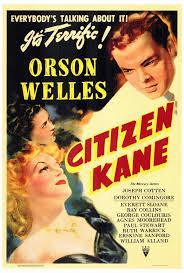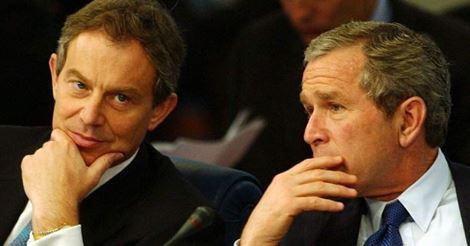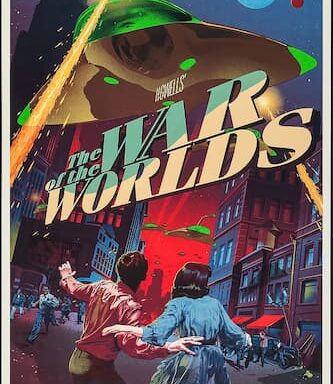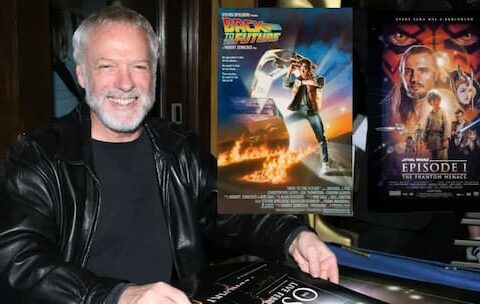In a mansion in the fictional Xanadu, a vast palatial estate in Florida, the elderly Charles Foster Kane is on his deathbed. Holding a snow globe, he utters the mysterious word “Rosebud” and then dies; the snow globe slips from his hand and smashes on the floor.
And that’s how one of cinema’s most iconic scenes opens one of the greatest motion pictures ever made.
Citizen Kane has been widely regarded by both film experts and cinema fans, and consistently over the decades, as the greatest film ever made. It has been the subject of countless essays, analyses and books; including Peter Cowie’s The Cinema of Orson Welles, Ronald Gottesman’s Focus on Citizen Kane, and Pauline Kael’s epic (and at times controversial) essay, ‘Raising Kane‘.
It has been a prevailing subject of fascination for film students or cinema enthusiasts, who have micro-analysed every element of it, from its use of light and shadow, camera techniques, cinematography, and narrative perspective, to its political and cultural significance.
Given that everything that could be said about Citizen Kane has already been said multiple times, I attempt nothing of the sort here; except to reiterate just how good a film Citizen Kane is and how likely it is to continue to fascinate and bewitch for as long as cinema is a subject for discussion.
Though I’ve been compelled to try to write something about Citizen Kane for as long as this blog has been active, I always hesitated; echoing, as it happens, the same way I hesitated for so long to even watch the film for the first time. What prompted me recently to post on the subject, however, was both the thirtieth anniversary of Welles’s death (and the 100th year since his birth), and a recent news item that Orson Welles’ personal script for Citizen Kane recently sold for £30,000 as part of a £100,000 sale of movie memorabilia (okay, not that recent – but I’ve been tinkering with this article for over a year).
Collectors had feared the annotated document, the third and final revision of the 1941 film – thought by many critics to be the greatest ever made – was lost forever because it had not been seen in 74 years. But they were amazed when it emerged at auction being sold by a consignor who was given it directly by Welles when filming finished. The 156-page script features Welles’ handwritten notes and diagrams concerning camera angles, and is signed by some of the film’s key cast members. A private collector reportedly acquired the document for $45,000.
Fascination for Welles, and particularly Citizen Kane, memorabilia has been strong for some time.
Back in 2007, Welles’s personal copy of the final revised draft before the shooting script was sold by Sotheby’s for $97,000.
A rare original 49-page transcript of Welles’ legendary 1938 radio broadcast of War of the Worlds (in which the dramatisation of a fictional Martian invasion prompted real-life mass hysteria) sold recently for $29,000. It came with a cover letter from CBS apologizing for the mass panic.
In 1982, Steven Spielberg acquired a “Rosebud” sled from the movie for $60,500; it was one of three of the balsa sleds used in Citizen Kane’s iconic closing scenes (and the only one that was not burned).
Welles’s Oscar for Best Original Screenplay was also thought to have been lost until it was resurfaced in 1994. It was auctioned for $861,542 in 2011 to an anonymous buyer.
Other than the more modern fascination with George Lucas and Star Wars, long-term obsession with Orson Welles, and Citizen Kane in particular, knows virtually no bounds. As an aside, it is worth noting – as some have – that George Lucas could be said to bear a curious resemblance to both Orson Welles and the fictional Charles Foster Kane; but that would warrant a whole separate article in itself (and I’m a huge George Lucas fan, so that observation isn’t intended as derogatory).
It is remarkable to think now that, in the United States, Citizen Kane was largely neglected and forgotten until its revival on television in the mid-1950s.
This is a familiar story, however, with films we now consider absolute benchmarks and classics and which were revived largely by the advent of television: Frank Capra’s It’s a Wonderful Life wasn’t a dissimilar case and it was television that is widely credited with having turned The Wizard of Oz into the cultural phenomenon it is (though The Wizard of Oz was, in truth, also a massive success on its cinematic release). With Citizen Kane, it was regarded to have under-performed on its theatrical release and it was television that really began to build up broader exposure.
Yet, again, it is now regularly regarded as the greatest film of all time and one of the most influential.
It perhaps becomes increasingly difficult in our age to properly appreciate just how groundbreaking and how influential the movie was: unless of course you are film student or analyst. Which I am not.

But its influence on filmmaking, cinematography and even storytelling can be seen in countless subsequent works over the decades. It can be seen, for example, in how Lawrence of Arabia begins, with T.E Lawrence’s death and funeral right at the beginning of the film then followed by the main story as a flashback. Its flashback structure also influenced various forties and fifties film noire, including classics such as The Killers and This Gun for Hire.
In its every facet – cinematography, lighting, establishing shots, narrative structure, foregrounds, camera movements – Citizen Kane altered the way movies could be made and the way films could be conceived. And you would be hard pressed to find any modern director who wouldn’t acknowledge having been influenced by Citizen Kane.
With all of this immense surrounding fog of analysis and the vast aura of myth, literature and anecdote surrounding the film, it actually becomes a daunting movie to even approach for someone who is yet to see it.
I, in fact, know someone who, for all his enthusiasm for film, has still never watched it – I’ve been trying to get him to watch it for years, but he is genuinely so intimidated by Citizen Kane and everything surrounding it that he has put it off perpetually (kind of like how Kurt Cobain said he has never gotten around to listening to a Joy Division album).
I can relate to that though; I didn’t see Citizen Kane for the first time until I was about 17 (and about sixty years after it was made), but I was already aware of so much baggage and aura surrounding it that it was kind of daunting. You can’t watch a film with innocence and pure eyes when it already has so much extraneous information around it.
And the first time I watched Citizen Kane, I almost couldn’t enjoy it – because I was thinking about all of these other things too; about how highly regarded this film was, about Orson Welles and how he was said to have spent the rest of his life in the shadow of this movie, and even about whether this was ‘the greatest movie ever made’. I literally asked myself several times during that first viewing, ‘Is this the greatest movie of all time?’
That’s no way to watch a movie!
That’s no way to appreciate art. Unfortunately, this is kind of unavoidable; anyone coming to Citizen Kane has to navigate the same culture of existing information and opinion. Thankfully, by the second time I was watching it, most of that extraneous stuff had faded away and I could watch the movie with less encumbered eyes. By the third or fourth time watching it, I could fully and truly appreciate and enjoy how extraordinary this film was and could also completely understand why it was so insanely well regarded.
It was no longer just received opinion or cinema dogma: it was all there on the screen and in the film and in how absorbing and compelling it was, at first on the surface level of the narrative and the immaculate editing, but later also on the more subtle levels of cinematography, framing, light, shadow, transitions and all the little things that film geeks so obsess over.
And it is one of the three or four movies, like Lawrence of Arabia, that I tend to watch at least once every year.
What remains particularly astonishing about Citizen Kane is that it was Welles’s first feature film. He was only 26 when he made it (and had been only 23 when his War of the Worlds radio broadcast had caused a mass panic). Yet it was his definitive work that would be regarded as his creative triumph for the rest of his long life: something that has been been regarded as both a curse and a blessing.
Welles’ contract, like George Lucas’s Star Wars arrangements, has become legendary in itself: the contract stipulated that he would get to act in, direct, produce and write two films. He was in effect granted complete artistic control of the two films so long as RKO approved both project’s stories and so long so the budget did not exceed $500,000. RKO executives would not be allowed to see any footage until Welles chose to show it to them, and no cuts could be made to either film without Welles’s approval. He was allowed to develop his story without any interference, was able to choose his own cast and crew, and have the right to the final cut. According to film historians, the young Welles’ extraordinary contract was widely resented in the film industry. And during the process of making the film, the Hollywood-centered media was sceptical and highly critical of both RKO and Welles.
Welles’s cinematographer was Gregg Toland, described by Welles himself as “just then, the number-one cameraman in the world.” The story is that Toland visited Welles in his office (to Welles’ astonishment) and asked to work on the picture, saying that he wanted to work with someone who had never made a movie before.
Welles recalled. “I was calling for things only a beginner would have been ignorant enough to think anybody could ever do, and there he was, doing them.”
Citizen Kane was edited by the famous director/producer Robert Wise, who also directed, among other things, the classic forties sci-fi film The Day the Earth Stood Still (and would, much later in his life, be called on by Gene Roddenberry to direct the first Star Trek movie in 1979).

Film scholars and historians view Citizen Kane as Welles‘s attempt to create a new style of filmmaking by studying various forms of film-making and fusing them together all into one movie.
When asked where he got the confidence as a young, first-time director to make a film so radically different from contemporary cinema, Welles famously said “Ignorance, ignorance, sheer ignorance — you know there’s no confidence to equal it. It’s only when you know something about a profession, I think, that you’re timid or careful.”
This was something Welles would reiterate many times in later decades: that it was his inexperience and naivety that had allowed him to make Citizen Kane what it was, and that a more professional, experienced filmmaker would never have thought along those lines due to ingrained filmmaking dogma and conditioning. This is in itself an extremely interesting aspect of Welles’ approach to Citizen Kane. It always reminds me of the fact that Jimi Hendrix couldn’t read or notate music, yet was an absolute wizard on the guitar: could Hendrix have ever learnt to play as magically as he did if he had been able to read or notate music?
Like Shakespeare, Welles’s authorship of his masterwork has been contested.
Controversies have raged for decades over the authorship of the Citizen Kane screenplay, primarily in 1971 by influential film critic Pauline Kael who published a 50,000 word essay called ‘Raising Kane’ in The New Yorker. According to Kael, the script was written almost entirely by Herman J. Mankiewicz, and Welles was cast as a villain who had actively plotted to deprive him of the credit.
Much of the mainstream press, always enthusiastic for a sensational story, gave credulity to Kael’s largely unsubstantiated claim. But by the time of Kael’s death 30 years later, the “Raising Kane” hypothesis was mostly being discredited and there was little doubt about Welles’s ownership. In a 1978 essay, “The Scripts of Citizen Kane“, Robert L. Carringer studied the collection of script records, reviewed all seven drafts and concluded that “the full evidence reveals that Welles’s contribution to the Citizen Kane script was not only substantial but definitive.”
_______________
Beyond the actual film-making techniques, the story and the themes also have provided film students with an almost endless array of considerations and perspectives.
Welles would explain that the basic idea of Citizen Kane was to craft a posthumous biography of a man via multiple points of view or recollection from those who had known him; literally “telling the same story several times and showing exactly the same thing from wholly different points of view”. It is a premise we might take for granted from our vantage-point, but at the time, this complex, non-linear narrative structure was highly unorthodox.
The film also juggled various themes and ideas, aside from its central character study.
In a 1992 monograph for the British Film Institute, critic Laura Mulvey focused on the anti-fascist themes of the film, which had been released while World War II was already going on in Europe (and six months before the Japanese attack on Pearl Harbour).
The ‘News on the March’ newsreel in the movie shows Kane hanging out with Adolf Hitler and other dictators and assuring the American people there will be no war. In the critic’s view, this part of the movie was exploring the struggle between “intervention and isolationaism” in the United States, specifically at a time where there was very little popular apetite for American involvement in what was seen as a European war and Roosevelt was seeking a way to draw America into the fighting. Mulvey perceived Charles Foster Kane’s own fate in the story as a metaphor for American isolationism, with Kane “dying wealthy and lonely, surrounded by the detritus of European culture and history.”
The political significance of the movie is also explored by other analysts.
Sarah Street writes on History Today, ‘Welles’ politics are extremely important for a full understanding of Citizen Kane in its contemporary context and partly explain Hearst’s dramatic reaction against the film. In the 1930s Welles was a fervent supporter of President Roosevelt’s New Deal: interventionist economic and social policies which had been enacted to combat the Depression, involving public works schemes and social security…’
‘…By the time Welles went to Hollywood he had already produced plays financed by the Federal Theatre, an arm of the New Deal’s cultural policy which was a relief measure to provide employment in the theatre. Having spent time in Europe and being deeply attracted to European culture, Welles was also an anti-fascist and urged American intervention in the Second World War. Hearst, on the other hand, campaigned against the New Deal and was a firm isolationist: hence his recriminations against Welles when Kane was first released’.
Journalist Ignacio Ramonet cites the film as an early example of mass media manipulation of public opinion and the excessive powers that big media conglomerates have on influencing the democratic processes. In Ramonet’s analysis, Kane, the mass media mogul, is almost a blueprint for such modern real-life figures; but, if anything, he is a tame version of what exists today. “He owned a few papers in one country,” the journalist says. “The forces that dominate today have integrated image with text and sound and the world is their market. There are media groups with the power of a thousand Citizen Kanes.”
Indeed, it was widely believed by the American press at the time that Charles Foster Kane was modelled on William Randolph Hearst, the hugely influential American newspaper publisher who built the nation’s largest newspaper chain and media empire, and whose practises are credited with having profoundly influenced the history of American journalism and modern media. The Randolph Hearst reference is believed to have come primarily from Welles’s collaborator, Herman Mankiewicz, who had a history and a grudge with the media mogul.
It is also claimed that banker Walter P. Thatcher was loosely based on J. P. Morgan.
One of the reasons that Citizen Kane – and not as a masterclass in cinematography or filmmaking, but as a story – does and will continue to resonate is because in many ways it seems to have envisioned a fair bit about the decades that were to follow and even speaks somewhat to where America is now.
Film critic David Thomson once observed that the film “grows with every year as America comes to resemble it.”
Perhaps most curiously, Orson Welles has been retroactively cited as a real-life Charles Foster Kane himself. Robert Wise believed that Kane actually resembled Welles’s later life story more than Hearst’s and said “Orson was doing an autobiographical film and didn’t realize it, because it’s rather much the same, you know. You start here, and you have a big rise and tremendous prominence and fame and success andwhatnot, and then tail off and tail off and tail off. And at least the arc of the two lives were very much the same.”
Peter Bogdanovich disagreed with this assessment and argued that the fictional Kane possessed “none of the qualities of an artist” whereas “Orson had all the qualities of an artist.” Bogdanovich also pointed out that Orson Welles had never become bitter “about all the bad things that happened to him” and in fact enjoyed the later stages of his life; and therefore wasn’t a Kane figure at all.
The supposed modelling on Randolph Hearst, however, is cited as the main reason Citizen Kane performed poorly on its theatrical release. The Oscar-nominated documentary The Battle Over Citizen Kane lays the blame for the film’s relative failure firmly at a bitter Hearst’s door. Hearst is said to have offered RKO president George Schaefer $800,000 to burn the negative and all the prints in a bonfire; he then more generally tried to prevent it from being widely released.
Because of Hearst’s enormous influence, major theatres boycotted the film, limiting Welles’s movie to smaller, independent theatres. The sheer scale of Hearst’s campaign against Welles has become even more apparent in recent years.
This sense of Welles having to fight against larger forces would, to some, characterise his entire career – which is seen by many, fairly or unfairly, as a story of constant failure in the shadow of such a substantial early triumph.
Roger Ebert wrote back in 1991; ‘The legends of “Citizen Kane” and Orson Welles were, in the next half-century, to become one of the central myths of Hollywood: how a boy genius in his mid-20s was given a completely free rein to make exactly the movie he wanted to make, and how in response he made the greatest movie of all time, only to see both the film and his own career chewed up and spat out by the venal, small-minded Hollywood establishment. Welles became the great outsider hero of cinema, central to the French auteur critics, championed by independent filmmakers, cited by anyone who wants to make an argument for film art over film commerce.’
________________
Despite all of its acclaim, fame and influence, Orson Welles would never again make a film as ‘successful’ as Citizen Kane again. At just 26, he had already had – in the eyes of many – his career peak with his very first film. The popular depiction of Welles’ career is that he spent the rest of his life in the shadow of Citizen Kane.
His follow-up movie, The Magnificent Ambersons, is now considered one of the great works of American film; but at the time, it wasn’t treated favorably, having been excessively undermined by the studio and altered from Welles’ original vision.

However, living as I do several decades removed from his early career (I was five when he died), when I look at Orson Welles, I don’t just see Citizen Kane. I think of The Third Man and The Lady From Shanghai – both of which are superb films; the latter directed by Welles and also starring his then estranged wife Rita Hayworth. I think of his relationship with Rita Hayworth. I think of course of that infamous War of the Worlds broadcast. I also think largely of his later life and some of his great interviews.
As Bogdanovich said, he wasn’t a bitter old creative, pottering away in seclusion and living in the shadows. He was a larger than life figure, who enjoyed in his later years and in fact went on to become one of the twentieth century’s great raconteurs. Watch footage of his interviews in later life, and he is an enthusiastic, joyful figure, telling great stories and happy to talk about his work – without a hint of bitterness.
And he did have reasons, after all, to be bitter. Having write, directed and starred in one of the most important, most pioneering, films of all time, he spent years pretty much having to panhandle for money to fund his film projects, suffering multiple, endless rejections from studios. Eventually, Welles’, this extraordinary filmmaker and artist, this great cultural icon, was reduced to doing TV commercials just to acquire the funding for his projects.
Several of his films never got made or remained unreleased. The Other Side of the Wind may in fact have become the most famous and talked about unreleased film in cinema history.
For all of that, he never seems to have come across as bitter or angry. And he remained fascinating; I’ve watched his 1974 interview with Michael Parkinson a bunch of times and Welles remained an affable, mercurial personality. This reality is best summed up in this 2011 piece from The Guardian; ‘I once saw a three-hour BBC interview with Orson Welles, and if it is possible to fall for a man just from seeing him on the telly, Mr Welles has had me as his love slave since.’
David Thomson observed in The Guardian in 2009, ‘If Orson Welles had never made Citizen Kane, he would be a phenomenon.’
But of course it is impossible to imagine a film world – or to want one – in which Welles’ had never made Citizen Kane. And you get the impression, from studying his later interviews and recollections, that Welles had no regret about having made Citizen Kane when he did.
Eventually, all the surrounding mythology and even all the brilliant elements of cinematography, technical flourishes and creative touches, do drift away from your perspective and you’re left processing Citizen Kane as you’re meant to: as a human story conveyed through the complex medium of film.
And it remains, at its core, a fascinating, absorbing story, centered on a fascinating, compelling character. In telling that story, Welles’s film also of course touches on any number of other things; it’s a film that seems to never stop giving, in that regard.
Whenever I watch the film, I cannot help but ponder the twentieth century; but more importantly it makes me think about the nature of life, the psychology of ambition or accomplishment and its possible connection to ego, the process of isolation and estrangement, the nature of perspective and perception, and deep questions about what it is a person sees when they look back across the journey of their life, and what a person clings to or perceives at the last breath.
Next time I watch it, I’ll probably come away with something else, something new, too.
See all FILM posts.





Reblogged this on WILDsound Writing and Film Festival Review.
Ain’t stopping but I think this is a brilliant piece, got me doing culture and history. Insights. May I rewind: ‘more importantly it makes me think about the nature of life, the psychology of ambition or accomplishment and its possible connection to ego, the process of isolation and estrangement, the nature of perspective and perception, and deep questions about what it is a person sees when they look back across the journey of their life, and what a person clings to or perceives at the last breath.’